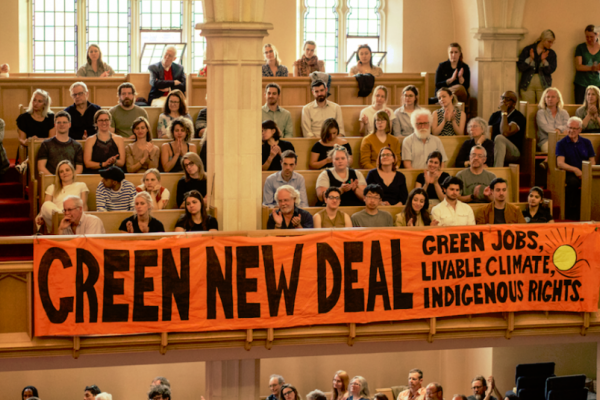From fighters to first responders
Why Canada should invest in disaster response, not fighter jets

Two Royal 22e Régiment light armoured vehicles in a flooded street in Saint-Jean-sur-Richelieu, Québec. May 2011. Photo courtesy the Department of National Defence.
The Canadian government is in the process of reviewing its current plan to acquire 88 F-35 fighter jets, and rightly so. The program is projected to cost $839.7 million per aircraft over a lifecycle of just 37 years. That’s a total price tag of $73.9 billion, even before the usual budget overruns. This makes the F-35 the most expensive procurement in Canadian military history, and one of the least justifiable in terms of strategic necessity and fiscal responsibility.
Critics of the F-35 purchase have long raised serious concerns. The jets are not only expensive and maintenance-intensive, but also ill-suited to Canada’s core defence tasks like Arctic patrols, search and rescue, and sovereignty enforcement missions. These jets are specifically designed for high-intensity combat: engaging in peer-to-peer warfare, stealth strikes and deep penetration missions of enemy air defences. In other words, they are built for offensive missions, not the kind of work the RCAF does on a day-to-day basis.
More troubling is that the F-35’s source code is controlled remotely by the United States, meaning there is a potential “kill switch” that could disable Canadian jets on a whim. This alone should be a non-starter for any country that values sovereignty over its own defence capabilities. Buying the planes would deepen Canada’s reliance on the US defence industry and its software systems, creating a dangerous form of dependency at a time when American policy is becoming more unpredictable and hostile to Canadian interests and values.
Beyond these issues lies a deeper strategic concern: opportunity cost. Every dollar spent on aircraft for hypothetical hot wars is a dollar not spent on urgent issues facing Canadians and the world today—needs like disaster preparedness, climate resilience, and humanitarian aid.
Indeed, we remain dangerously underprepared for the security implications of intensifying climate catastrophes, which are no longer distant possibilities. They are here now, growing more frequent, destructive, and complex.
In 2023 alone, wildfires forced over 230,000 Canadians to evacuate their homes, blanketed major cities in toxic smoke, and overwhelmed emergency services. In British Columbia, atmospheric rivers caused flooding, severed roads, and isolated communities. In the north, thawing permafrost is destabilizing infrastructure and threatening Indigenous communities. These are not isolated incidents, they are part of an accelerating pattern of cascading climate threats.
Melting arctic ice is a major consequence of climate change, with far-reaching effects on the environment, northern communities, and Canada’s national security. Photo by Patrick Kelley/Flickr.
Canada is ill-prepared to respond to the growing danger. Much of our population and infrastructure lies along coastlines, putting millions of people at risk to sea-level rise, storm surges, and extreme weather. The Canadian Security Intelligence Service has even modelled the potential loss of “significant parts” of BC and the Atlantic provinces to flooding. Its report concluded that climate change presents a “complex, long-term threat to Canada’s safety, security and prosperity outcomes.”
While traditional national security focuses on state-based military threats, research shows how integral economic, environmental, and public health are to a nation’s security. Responding effectively to large-scale disasters requires a holistic approach, with a need for rapid deployment, self-sufficient logistics, and the ability to operate in devastated coastal regions. Canada’s existing security infrastructure is not designed to address these wide ranging threats to security, and procuring F-35s would only make this problem worse.
Much like our specialized ships for combat or icebreaking, we now need vessels equipped specifically to bring aid, medical teams, and critical supplies directly to disaster zones. Yet despite this broader view and critical need, there is currently no vessel anywhere in the world purpose-built specifically for humanitarian aid and disaster relief. This leaves communities and infrastructure vulnerable, and first responders without the tools they need to act swiftly in emergencies. Canada now has a real opportunity to address this urgent gap and to lead by example on the global stage.
The Canadian Humanitarian Aid and Disaster Relief (HA/DR) Project offers a bold new direction: building dedicated disaster relief ships designed to respond quickly and effectively to crises around the world. These vessels would be built in Canada and operated by the Canadian Coast Guard, with support from the Royal Canadian Navy and Royal Canadian Air Force. Civilian humanitarian agencies and non-governmental organizations would lead the relief efforts on board, ensuring that aid reaches communities efficiently.
This would be more than a ship. It would serve as a floating lifeline, a logistics hub, a helicopter landing pad, and a beacon of hope for communities in crisis. It would be equipped to deliver medical care, food, clean water, and rescue services exactly where and when they’re needed. Think of it as a floating Red Cross base. Beyond the practical use, it would send a powerful message: Canada is here and committed to meeting today’s challenges with compassion and foresight.
You might be wondering: how do we pay for it? Well, what if the answer is already in our budget?
Artist rendering of the CCGS Norman Bethune, a dedicated Humanitarian Aid/Disaster Relief ship.
To free up billions in Canada’s defence budget to fund disaster relief ships, choosing a more cost-effective fighter jet might help. Saab’s Gripen E aircraft costs roughly a quarter of the F-35’s price, yet offers equal or better performance on the metrics that matter most to Canada’s defence needs. Countries like Sweden, South Africa, Brazil and Hungary have already chosen the Gripen E precisely because it is affordable, easy to maintain, effective, and gives full control of the software and systems to the host nation.
Another way to pay for these humanitarian vessels could involve building them in Canada. According to the HA/DR project, converting a container ship for disaster relief would cost about $677 million per unit. By comparison, the Royal Canadian Navy’s Joint Support Ships, which are military focused, cost roughly $2 billion a piece. Even using this higher figure, building, maintaining, and operating four ships would cost about $15 billion. Using this estimate, Canada could produce these ships and save $38 billion. These funds could be invested to produce and maintain up to 14 globally deployable disaster response vessels.
Defenders of the F-35 plan argue the program is necessary for national defence, but Canada’s security reality is very different from its European allies in NATO. We are not a global military power, nor do we face daily threats from hostile neighbours.
Redirecting even a fraction of the F-35 budget toward humanitarian response wouldn’t weaken Canada’s defence, it would redefine and strengthen it for the threats we actually face. Climate disasters, infrastructure collapse, and humanitarian crises aren’t distant possibilities; they are unfolding now. By shifting focus from outdated notions of warfare to the urgent realities of today, Canada has a chance to lead the world in a new era of security—one rooted in resilience, readiness, and compassion.
The next disaster will come. Will Canada be ready? We can choose to be the country that responds first, not fires first. Let’s build that future, one ship at a time.
Kody Sider is a graduate student at Simon Fraser University’s School of Public Policy. He holds undergraduate degrees in international development and psychology.
Dr. Megan MacKenzie is the Simons Chair of International Law and Human Security in the School for International Studies at Simon Fraser University and co-Director of the Canadian National Research Network on Women, Peace and Security. She is a leading expert on gender and war, military culture, gender, bias and discrimination in large institutions, and post-conflict reconstruction. Her latest book is Good Soldiers Don’t Rape: The Stories We Tell About Military Sexual Violence (Cambridge University Press, 2023).










